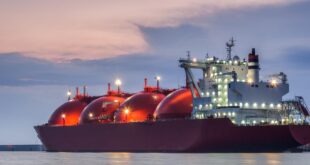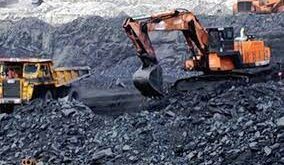The prospects for the LNG market have changed dramatically in the last two years as China has more than doubled its LNG imports. confounding all expectations.
As recently as mid-2016 the outlook was all doom and gloom. with the International Energy Agency predicting the international market would be over-supplied and stricken with low prices until at least the end of the decade. However. prices have since been rising rather than falling. Average Chinese LNG import prices in September 2018 were US$9.89 per mmBtu. up by 37pc on prices in 2016.
And it looks as though the trend will continue through 2019 as China chases its domestic clean-air goals. despite mistakes along the way. Last year overly ambitious targets to replace coal led to gas shortages in the winter in northern China with serious consequences such as school students suffering from frostbite.
The spike in Chinese gas demand is one of the major factors driving this market tightening. According to the National Development and Reform Commission. gas consumption in the first nine-months of 2018 was up by18.2pc on a year earlier. reaching 202bn bcm. But at just 6.3pc. growth in indigenous gas production fell well short of demand. with the result that gas imports grew by a staggering 37.6pc to 87bcm.
This makes China the world`s largest gas importer. having passed Japan in April 2018. China now depends on imports for 44pc of its gas needs.
China imports gas as both LNG and pipeline gas. the latter from central Asia and Myanmar. Pipeline imports have been growing but the biggest impact of the increase in demand has shown up in LNG imports. which more than doubled. from 30bcm in 2015-16 to 63bcm in 2017-18.
The jump in gas use reflects industrial growth generally. together with ambitious government targets to improve urban air quality. including by switching coal-fired boilers to gas. The latest five-year plan requires cities to meet good or excellent air quality standards 80pc of the time by 2020. And with good reason. At the time of writing in early November. air quality in major Chinese cities ranged from an official `moderate` in Hong Kong and Beijing. through `unhealthy` in Guangzhou and Chengdu to positively `hazardous` in Shanghai.
The outlook is for continuing strong growth in gas demand. The country aims to increase gas use to 8.3pc-10.0pc of primary energy consumption by 2020. up from 6.6pc in 2017. LNG will continue to meet the major share of demand. albeit while indigenous gas production continues to fall behind targets.
Meantime deliveries of gas by pipeline are also set to grow. Russia`s Power of Siberia pipeline was 95.5pc complete at the end of October and is expected to supply first gas to north-east China by the end of the year. However. while the pipeline has 38bcm p y capacity. supply will be constrained by the need to develop the necessary downstream gas distribution infrastructure. In fact. the pipeline may not reach full capacity until the middle of next decade.
However. there is a lot happening in terms of infrastructure. According to Credit Suisse. in addition to the 19 terminals currently operating. a further 10 under construction and there are 16 new approvals. This will bring regasification capacity to around 190bcm by 2025. There are also significant regional differences in terminal utilisation. being higher in northern China than in the south. To avoid a repeat of this year`s freeze. Sinopec plans to hire 1.600 trucks to deliver gas from LNG terminals in southern China to cities in the north this winter.
In addition to short-term measures like pressing trucks into action. Sinopec has announced plans to expand its LNG receiving terminals and to improving the connectivity of its pipeline networks with PetroChina. China also has limited gas storage capacity. now running at only three per cent of annual consumption. and all three of the major Chinese companies are investing in expanded storage.
The biggest long-term constraint on growth of LNG will. however. be price. The growth in China`s LNG imports is fundamentally driven by government policy rather than by economics and while increased use of gas has significant environmental benefits. it comes at a cost. The major companies such as PetroChina make a loss on their gas imports—gas is still more expensive than coal for consumers.
Like governments everywhere. the Chinese government faces a delicate balancing act between keeping energy prices affordable and cleaning up the environment.
 Iran Energy News Oil, Gas, Petrochemical and Energy Field Specialized Channel
Iran Energy News Oil, Gas, Petrochemical and Energy Field Specialized Channel




